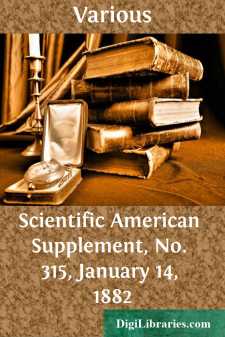Categories
- Antiques & Collectibles 13
- Architecture 36
- Art 48
- Bibles 22
- Biography & Autobiography 813
- Body, Mind & Spirit 142
- Business & Economics 28
- Children's Books 15
- Children's Fiction 12
- Computers 4
- Cooking 94
- Crafts & Hobbies 4
- Drama 346
- Education 46
- Family & Relationships 57
- Fiction 11828
- Games 19
- Gardening 17
- Health & Fitness 34
- History 1377
- House & Home 1
- Humor 147
- Juvenile Fiction 1873
- Juvenile Nonfiction 202
- Language Arts & Disciplines 88
- Law 16
- Literary Collections 686
- Literary Criticism 179
- Mathematics 13
- Medical 41
- Music 40
- Nature 179
- Non-Classifiable 1768
- Performing Arts 7
- Periodicals 1453
- Philosophy 64
- Photography 2
- Poetry 896
- Political Science 203
- Psychology 42
- Reference 154
- Religion 513
- Science 126
- Self-Help 84
- Social Science 81
- Sports & Recreation 34
- Study Aids 3
- Technology & Engineering 59
- Transportation 23
- Travel 463
- True Crime 29
The Mirror of Literature, Amusement, and Instruction Volume 20, No. 581, December 15, 1832
by: Various
Categories:
Description:
Excerpt
CHAPEL ON THE BRIDGE, WAKEFIELD
Chapels on bridges are not so unfrequent in architectural history as the rarity of their remains would indicate. Among the early records of bridge-building we read that "the Romans built many bridges in the provinces; viz. in France, Spain, Germany, Britain, &c. some of which had arches or towers on them." Plutarch derives the word Pontifex, (high priest,) from sacrifices made upon bridges, a ceremony of the highest antiquity. The priests are said to have been commissioned to keep the bridges in repair, as an indispensable part of their office. This we may conclude to have given rise to the annexation of chapels to almost all our bridges of note; and the offerings were of course for repairs: so that priests are considered to have been the olden surveyors of bridges, and chapels on them to have been displaced by the more secular establishment of toll-houses.
The bridge, upon which stands the above chapel, crosses the Calder, at the south-east entrance into Wakefield, in the West Riding of Yorkshire. It was built in the reign of Edward III. and is a fine specimen of the masonry of that age. In the centre projecting from the eastern side, and resting partly on the sterlings, is the chapel, built in the richest style of Gothic architecture. It is about ten yards in length, and about eight in breadth. The east window, overhanging the river, is adorned with various and beautiful tracery, and the parapets are perforated. The windows on the north and south sides are equally rich. But the west front facing the passage over the bridge, (as shown in the Engraving,) exceeds all the rest in profusion of ornament; being divided by buttresses into compartments, forming recesses, with lofty pediments and pointed arches; whilst above is an entablature bearing five basso-relievos, the whole being crowned with battlements. The buttresses, finials, tracery, &c. form an assemblage of Gothic embellishments, which, for richness and delicacy can scarcely be equalled. This chapel was built by Edward IV. in memory of his father, Richard, Duke of York, and those of his party who fell in the battle of Wakefield. It appears, however, that a chapel had been built on this bridge by Edward III., and dedicated to St. Mary; but it was undoubtedly rebuilt and embellished by Edward IV. who, on this account, may be regarded as the founder of the present structure.
The beautiful embellishments have received considerable injury; and, about twenty years since this superb relic of ecclesiastical architecture was used as a warehouse. As architectural renovation is becoming somewhat the taste of the day, it is to be hoped that the restoration of the chapel at Wakefield will not be overlooked.
THE BROTHER OF OLIVER GOLDSMITH.
(To the Editor.)As I was personally acquainted with Charles Goldsmith, the younger brother of Oliver, the Poet, I am enabled to furnish a few particulars in addition to those of Philo, contained in No. 573 of The Mirror. Charles, on his coming to this country, from the West Indies, had with him two daughters, and one son named Henry; all under 14 years of age....












